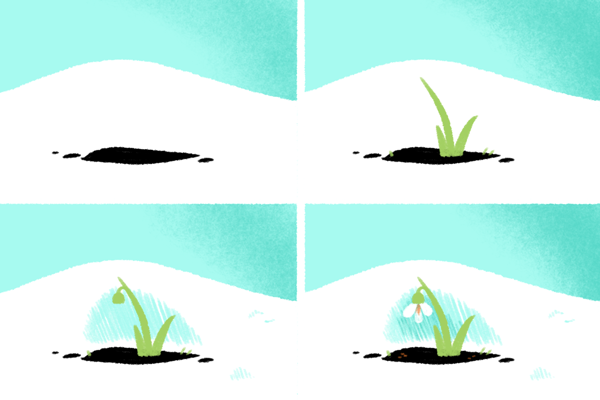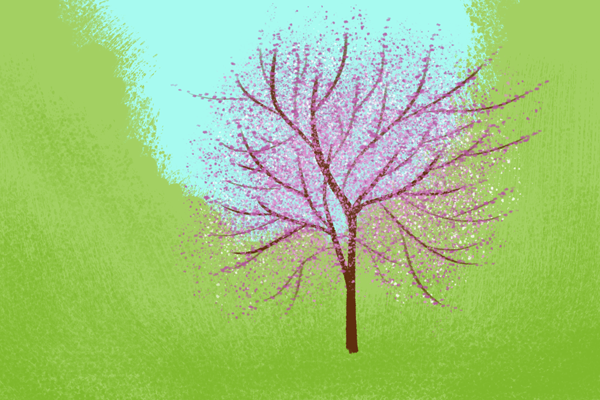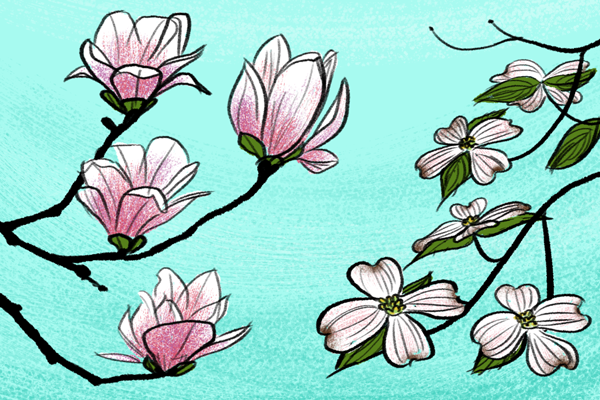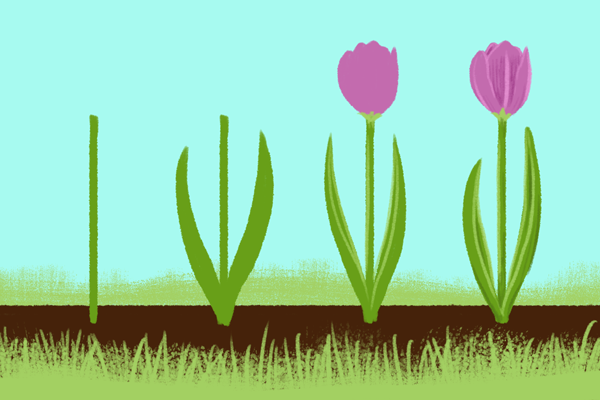Hints of spring are beginning to show up, finally, and it feels so wonderful. The snow has left. The sun has returned. Taking my daughter to school, I can hear the chirp of long-missing birds returning to build their nests — jays and cardinals and robins. The chickadees are unceasing.
It doesn’t take too much to sprinkle some of that wonderful into your illustrations, and one of my favorite ways to hint at the season is to show what is growing.
Read on to learn how to draw simple flowers in your spring drawings.

Most of the time when I am including flowers, they are a texture, a way to balance color, or a suggestion of the season — not the main subject of an image. I would approach those drawings much more deliberately. In the following examples, I am just hinting at a flavor of these plants in spring drawings, not trying to capture every nuance.
As you select your background flora, think about timing and what happens together when choosing your seasonal background clues. For example, if it is important that the story you are illustrating takes place at the first snowfall, don’t show any oak trees completely naked of leaves – they sometimes hold their leaves until midwinter, or even spring!
Where I live in the upper Midwest, our first signs of spring are small — bluebells, crocuses and grape hyacinths. Little green shoots that splash color into the corners of our yards and gardens.
Here is how I draw a snowdrop.

Redbud
When I lived in North Carolina, redbuds, magnolias and dogwoods were prominent harbingers of spring. A redbud has a light, airy construction to it, and the buds cover the branches, making it something of a neon pink sign. I build the thin branches first. Then I sprinkle the tiny pink buds along their lengths. There is no green on a redbud before the flowers bloom.

Dogwood and magnolia
Dogwoods and magnolias are sturdier than redbuds, and the flowers are larger with thicker petals. Dogwood flowers are distinctive, with their four petals and dark inverted tips. Their centers are a collection of tiny beads. The leaves and the flowers are planar, catching the sun from overhead.

Magnolia flowers are like tulips, reaching up and catching the spring rains. When the leaves come, they are deep green and glossy. Everything points up. I wouldn’t draw either tree without reference photos, usually pulled from an image search, because both magnolias and dogwoods have so many flowers at a time, and it’s difficult to capture the density, shapes and delicateness without some research.
Tulip and daffodil
Tulips too, of course, are good signs of spring, though they often come later than the other flowers we’ve looked at here. Tulips and daffodils go well with Easter, but once your lilacs begin to blossom, you are already on the cusp of summer.

Tulips are simple to draw. Just a tall, straight stem rising from the ground along with broad, tall leaves. They are usually planted deliberately, so an orderly row looks correct.

A daffodil’s trumpet ruffles out from six pointed petals. Daffodils often naturalize, and grow in clusters.
How do you indicate the seasons in your images? Which birds and bugs tell you the time of year?
5 Botanical Illustration Tutorials
Bring a garden of beautiful flowers to life in mixed media.Get My FREE Guide »


This looks helpful.